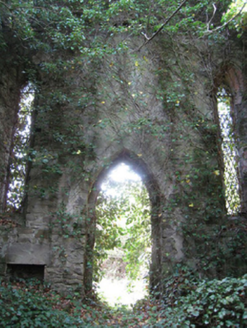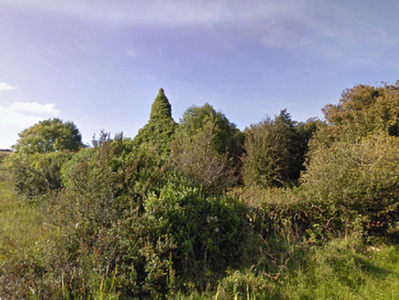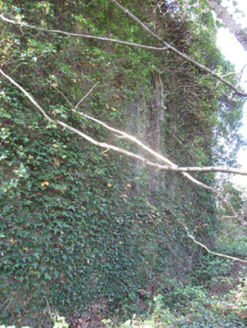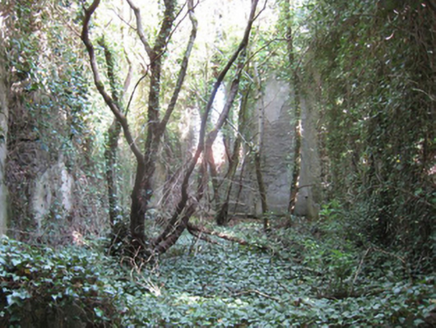Survey Data
Reg No
31301412
Rating
Regional
Categories of Special Interest
Architectural, Artistic, Historical, Social
Original Use
Church/chapel
Date
1843 - 1856
Coordinates
117450, 335863
Date Recorded
04/07/2012
Date Updated
--/--/--
Description
Detached four-bay double-height single-cell Ecclesiastical Commissioners' Church of Ireland church, extant 1856, on a rectangular plan. Disused, 1943. In ruins, 1976. Pitched roof now missing, overgrown coping to gables including overgrown coping to gable to entrance (south) front with overgrown buttressed gabled bellcote to apex, and no rainwater goods visible on overgrown eaves. Overgrown tuck pointed snecked limestone walls on battered base. Lancet window openings with overgrown dressings. Lancet "Trinity Window" (north), overgrown dressings with hood moulding on engaged octagonal label stops. Pointed-arch door opening to entrance (south) front with overgrown threshold, and overgrown dressings with no fittings surviving. Lancet flanking window openings with overgrown dressings framing fixed-pane fittings having cast-iron lattice glazing bars. Interior in ruins. Set in overgrown grounds.
Appraisal
A church erected to undated designs signed by Joseph Welland (1798-1860), Architect to the Ecclesiastical Commissioners (appointed 1843), representing an important component of the mid nineteenth-century ecclesiastical heritage of north County Mayo with the architectural value of the composition confirmed by such attributes as the compact rectilinear plan form, aligned along a liturgically-incorrect axis; the construction in a deep grey limestone offset by sheer dressings demonstrating good quality workmanship; the slender profile of the openings underpinning a "medieval" Gothic theme with the chancel defined by an elegant "Trinity Window"; and the overgrown bellcote embellishing the roofline as a picturesque eye-catcher in the landscape. Although reduced to an ivy-enveloped ruin following a prolonged period of neglect in the later twentieth century, the elementary form and massing survive intact together with interesting remnants of the original fabric, thus upholding much of the character of a church making a pleasing, if increasingly obscure visual statement in a sylvan street scene. NOTE: A lichen-spotted grave cover marks the burial plot of Reverend George Bermingham (d. 1863), 'late Vicar of Lacan [sic] in the County of Mayo' (Calendars of Wills and Administrations 1863, 21).







